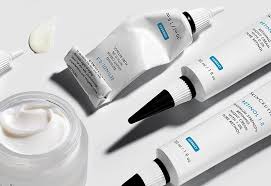
The Complete Morning-to-Night Skincare Routine for Aging and Prematurely Aging Skin
Aging is something we all face—every skin tone, every type, and every age group. But it’s not just about the passing of time. Our skin is constantly exposed to environmental stressors like sun damage, pollution, blue light from screens, and even lack of sleep, all of which can accelerate signs of aging such as fine lines, crow’s feet, sagging, dullness, and dryness.
Whether you’re looking to prevent premature aging or minimize the appearance of existing signs, the right skincare routine can make a transformative difference. From gentle cleansers and collagen masks to retinol serums and antioxidant oils, this step-by-step morning-to-night guide will walk you through how to care for aging skin and keep it firm, glowing, and healthy—at any age.
🌤 Morning Skincare Routine: Protect, Hydrate, and Prep for the Day
The key focus of your morning routine is to protect your skin barrier, hydrate, and defend against UV rays and environmental aggressors. Here’s your step-by-step AM routine:
Step 1: Fortifying Barrier Cleanser (Daily)
Every good skincare routine begins with a clean canvas. As we age, however, our skin becomes more delicate and prone to dryness. That’s why it’s essential to use a gentle, soap-free, pH-balanced cleanser that doesn’t strip away essential oils.
Look for:
Pro-Vitamin B5 to help restore the skin’s moisture barrier
Antioxidants to fight environmental stress
A creamy or gel-based texture that rinses off easily without drying
Benefits:
Removes dirt, oil, and leftover makeup while maintaining the skin’s natural protective barrier.
Step 2: Collagen Boosting Mask (2–3x per week)
As we age, our natural collagen production slows down, leading to sagging and loss of elasticity. A collagen-rich mask helps restore skin’s bounce and firmness.
Choose a formula that includes:
Plant-based collagen (great for vegans!)
Rosehip Seed Oil, rich in essential fatty acids and Vitamin A
Hydrating botanicals like aloe or squalane
Benefits:
Plumps, firms, and improves skin tone and elasticity. Use 2–3 times weekly in place of your serum step.
Step 3: Peptide Eye Cream (Optional but Recommended)
The under-eye area is often the first place to show signs of fatigue and aging. A good peptide-based eye cream helps firm, hydrate, and brighten tired eyes.
Look for:
Peptides for firming
Ethically sourced Mica for instant brightness
Caffeine to depuff under-eye bags
How to apply:
Dab a pea-sized amount using your ring finger to gently pat under and around the eye.
Step 4: Vitamin E Moisturizer (Daily)
As we age, skin’s ability to retain moisture decreases. A moisturizer rich in Vitamin E helps combat dryness while fighting free radicals that contribute to premature aging.
Look for:
Vitamin E (Tocopherol) for antioxidant protection
Hyaluronic acid for hydration
A non-comedogenic, nourishing base
Tip:
Massage upward into the skin to stimulate circulation and absorption.
Step 5: Broad-Spectrum Sunscreen SPF 35+ (Every Single Day)
Did you know that 90% of visible skin aging is caused by sun exposure and not chronological aging? Sunscreen is the single most important product in your anti-aging toolkit.
Opt for:
SPF 35 or higher
Broad-spectrum coverage (UVA + UVB protection)
Blue light + pollution protection, especially if you’re in front of screens all day
Bonus:
Look for added ingredients like niacinamide, which supports barrier function and evens tone.
🌇 Evening Skincare Routine: Repair, Restore, and Rebuild
At night, your skin enters repair mode—a time when cells regenerate and replenish. This is the perfect window to use actives like retinol and exfoliants, which can be irritating in the daytime or interact poorly with sunlight.
Step 1: Fortifying Barrier Cleanser (Nightly)
Cleanse your skin again to remove the day’s impurities, sweat, and sunscreen. Consider double cleansing if you wear makeup or SPF.
Start with:
An oil-based cleansing balm to dissolve makeup and sunscreen
Follow with your pH-balanced gel or cream cleanser from the morning
Result:
Clean, fresh skin that’s ready to absorb serums and treatments.
Step 2: Exfoliating Tool (1x per week)
With age, our skin’s natural exfoliation slows down, leading to buildup and dullness. Gentle physical exfoliation helps smooth skin texture and remove dead skin cells.
Use:
A facial dermaplaning or exfoliation tool
Once weekly to resurface the skin and reduce age spots
Bonus:
Removes peach fuzz and enhances the absorption of serums.
Step 3: Retinol Serum (3–4x per week)
Retinol is one of the most effective ingredients for reducing fine lines, wrinkles, and uneven texture. It speeds up cell turnover and encourages collagen production.
Apply:
2–3 pumps to clean, dry skin
Avoid exfoliation nights to prevent irritation
Extend application to neck and décolletage
Tip:
Always follow with a moisturizer and never use retinol in the morning.
Step 4: Retinol Eye Ointment (Nightly)
Delicate under-eye skin also benefits from retinol, especially when combined with soothing, hydrating ingredients like black currant seed oil.
Why it works:
Firms the skin
Reduces crow’s feet and under-eye lines
Nourishes while you sleep
Step 5: Leave-On Chemical Exfoliant (2x per week)
A chemical exfoliant like lactic acid or mandelic acid helps fade age spots, brighten dullness, and improve skin tone. AHAs are gentle yet effective exfoliators.
Choose:
Overnight treatments with AHAs + Vitamin E
Fragrance-free formulas to avoid irritation
Reminder:
Do not use on the same night as retinol to avoid over-exfoliation.
Step 6: Advanced Night Cream (Every Night)
A good night cream provides deep hydration and repair overnight. Aging skin loses moisture faster, so richer formulas are essential for replenishment.
Look for:
Fermented Purple Tea for antioxidant power
Green Coffee Extract to smooth rough texture
Peptides and ceramides to strengthen the skin barrier
Bonus:
Massaging your night cream into the skin boosts circulation and product efficacy.
Step 7: Antioxidant Facial Oil (Optional)
For a final layer of nourishment and protection, apply a few drops of antioxidant-rich facial oil. This helps lock in moisture and enhance your skin’s glow.
Key Ingredients:
Rosehip, jojoba, or marula oil
Vitamin C or E for antioxidant defense
When to apply:
Before or after night cream, depending on your preference and skin’s needs.
Step 8: Retinol Body Lotion (Nightly)
Don’t stop at your face—aging affects your neck, arms, chest, and legs too! A retinol body lotion helps even skin tone, firm sagging areas, and soften rough patches.
Use nightly on:
Upper arms
Thighs and knees
Chest and neck
Moisturize after application if your skin feels dry or tight.
🌟 Final Thoughts: Aging Gracefully with the Right Routine
Aging is natural—but looking and feeling your best at every stage is completely possible with a consistent and targeted skincare routine. The key is choosing products formulated to protect, treat, and nourish your skin based on its needs and concerns.
With this AM-to-PM routine in hand, you can create a daily ritual that not only treats signs of aging but also prevents future ones. And remember: skincare isn’t just about looking good—it’s a form of self-care and self-love.


